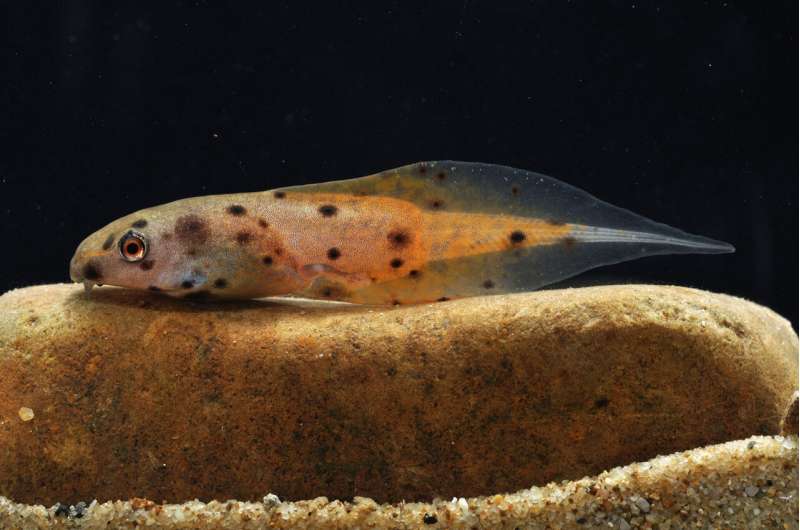Researchers publish 'Guide to the Tadpoles of Borneo'

Important, yet often neglected, tadpoles play a critical role in the ecology of aquatic habitats. On 279 pages, a new book presents descriptions for 99 species from the southeast Asian island of Borneo, covering all species commonly found, as well as representatives of the more cryptic ones. LIB-scientist Alexander Haas and his team of international collaborators worked over 20 years on its completion and just released "A Guide to the Tadpoles of Borneo."
"The morphological and ecological diversity of tadpoles is remarkable, although comprehensive inventories and descriptions of the tadpole fauna are unavailable for most regions of the world," says Prof. Dr. Alexander Haas, Head of Department Herpetology and Scientific Infrastructure at the the Leibniz-Institut for the Analysis of Biodiversity Change (LIB). The book is aimed at a broad audience, providing easy access to the tadpole fauna of Borneo. The team behind it wants to increase awareness of these life stages, document their diversity, and provide insights into their fascinating biology.
Haas started the inventory of Borneo's tadpoles in 2001 together with Malaysian collaborator Prof. Dr. Indraneil Das (Universiti Malaysia Sarawak, UNIMAS). Two years later, the team received funding from the Volkswagen Foundation to continue fieldwork in the states of Sabah and Sarawak in Malaysia as well as support from Dr. Stefan S. Hertwig of the Natural History Museum Bern. In many expeditions since then, the team collected a wealth of original data on Borneo's tadpoles and the associated frog species. A substantial number of Malaysian, German, and Swiss students took part in the field trips and contributed to the success of the project with their Bachelor and Master theses.
"Finding tadpoles in the lush rainforests of Borneo under harsh climatic conditions was a challenge. Because of the scarce information that had been available for at least some species, little was known about habitat and microhabitat preferences of the tadpoles," says Alexander Haas. "Our team had to start from scratch and develop our own strategies, skills, tools, and techniques to locate, capture, and document tadpoles."
This intensive work led to many discoveries: Several tadpoles, that had not been described scientifically before were collected and studied. Along the lines of this international collaborative project, and in addition to data on larvae, a series of new frog species were discovered and new phylogenetic hypotheses formulated. This work allowed new insights into the ecology and morphology of certain species, both in the tadpole and adult life stages. The results have been published in a series of scientific papers by the three investigators and their students.
Books on tadpoles are scarce globally, says Haas. "Compilations and documentation exist for only few countries or geographical regions. Therefore, it was our firm determination right from the beginning of the project that once enough data accumulated, a book project should be launched." By pursuing the book project, their intention was to reflect the experience of almost two decades of field expeditions. Technological progress, and specifically the advent of digital photography, which reached mainstream markets in the early 2000s, allowed them to collect more images of better quality.
They developed standards on how to scientifically photograph living tadpoles under field conditions. For example, small photo-stage aquaria had to be custom-built and carried to even the most challenging field destinations deep in the jungle. Over the years, the meticulous compilation of high-quality imagery was the basis on which the book project could eventually be built.
Haas invited Prof. Reinhard Schulz-Schaeffer (University of Applied Sciences, HAW), a leading expert in informative illustration and scientific illustration, to join the project as co-author and to collaborate in the search for innovative approaches of handling scientific information. Graphics designer Pia Bublies completed the team. "Reinhard's and Pia's expertise allowed us to develop our own concept of dealing with information in the book. We discussed intensively what function visual and text information should have, how they work together, and what style emerges from that. Clearly, we had to break with some traditions of the genre," says Haas.
Information for each species is provided in the book through color images, silhouette vector graphics, and associated text blocks. "We want the readers to find pertinent information quickly in a non-linear information seeking process," Haas says.
Provided by Leibniz-Institut zur Analyse des Biodiversitätswandels




















